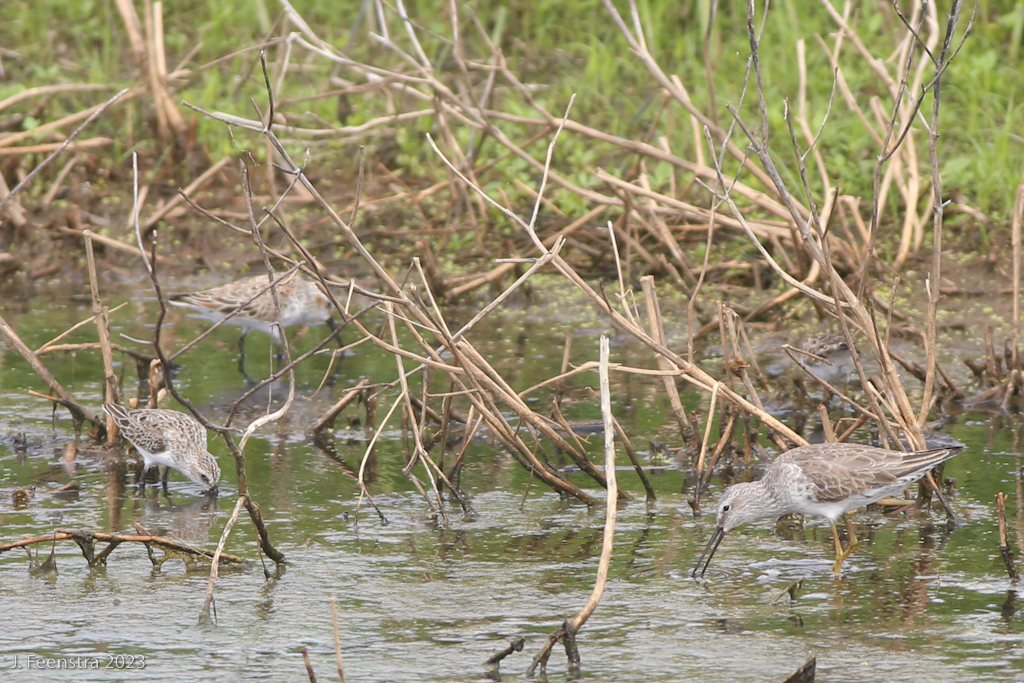WINGS Tour: Texas Coast, April 2023

April 13 - 20, 2023
The Crew: Bruce, Carol, Elisabeth, Linda, Maureen, Philip, Rusty, Jon (bird guy)
As a waiter at dinner told the group, “I just think it’s amazing that for a few weeks this time of year, this place is the best place to go birding.” Yup. And, yup. That’s why we were there. For a week we enjoyed some classic Texas coast birding with warblers in the woods, herons and spoonbills on nests, terns and shorebirds on the beach, and wetlands full of whistling-ducks. Plus, we weren’t far from the big thicket and piney woods, a completely difference habitat than what we were enjoying on the coast. Some of our best experiences of the week included watching a Cerulean Warbler feed on a roadside, seeing Brown-headed Nuthatches creep around on tree trunks, getting dazzled by Red-headed Woodpeckers, seeing and hearing hundreds of Great Egrets, Tricolored Herons, Neotropic Cormorants, and Roseate Spoonbills stacked together in nest trees, and getting many great and extended looks at birds that get a lot harder to see once they leave these migration stopovers to hunker down in their thickets for the breeding season. And, when we weren’t actively watching some bird, we were just wandering around lovely places anticipating what we would bump into next.


Our first day was getting into the “highlands” of the piney woods and Big Thicket eco-region. We started right outside of Houston at a woodlot managed for Red-cockaded Woodpeckers and quickly found a few. Though rare, they weren’t as pretty as the show-stopping Red-headed Woodpeckers on the adjacent tree. Then that woodpecker was bombed by Eastern Bluebirds as it got too close to their nest. Meanwhile, above, Brown-headed Nuthatches crept about and Pine Warblers sang. Continuing northeast , our next stop was really just a leg stretch at the municipal park in Livingston, nothing special, just some town. The park wasn’t too exciting, but what was exciting were pulses of Broad-winged Hawks overhead. One group was of about 75 birds, streaming by, then kettling up and soaring off to the northwest. Amazing what chance can be. Then we stopped for lunch in a Big Thicket park. The picnic was all good, but we also had more looks at Red-headed Woodpecker, plus some of our first warblers: Northern Parula and Prothonotary Warbler, here on their breeding territories. The trip was off to good beginning.




With the rumbling of thunderstorms in the distance, we began the day in the pines with singing Bachman’s Sparrows, their ringing songs echoing through the stillness. On the edge of Angelina National Forest we could hear the infrequently heard song of a Greater Roadrunner somewhere. We couldn’t see it, but listening to it was a treat. Leaving the pine woods behind we made our way toward the coast, stopping in a marsh in the city of Beaumont for birding and a picnic. We saw a Least Bittern poking its head out of the vegetation as Purple Gallinules walked across the top, and a pair of Pied-billed Grebes were doing a stare-down, chest-puffing pair interaction. We did eventually make the coast and we walked the boardwalk at Sea Rim State Park. Flocks of Roseate Spoonbills waded along. A Sora came out of the reeds to poke around with the dowitchers. And, birds were everywhere: terns, shorebirds, ducks, and cormorants. Since word was that there wasn’t much of a migrant push today, we made for our coastal base of Winnie, but first stopping for a Crested Caracara posing on a utility pole.
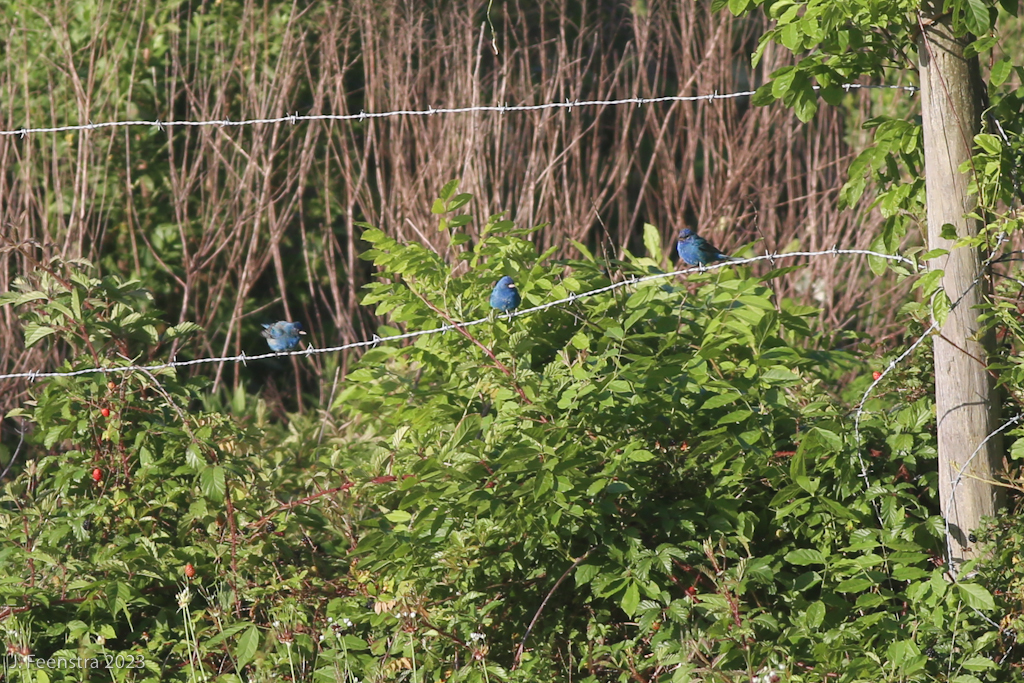

Our third full day of birding we went to High Island, and really got to see what all the fuss was about. An overnight thunderstorm rerouted a few things – there weren’t gobs of birds, but the diversity was good, and so were some of the quotes, like, “the Cerulean Warbler just chased away the Worm-eating Warbler,” and, “there’s a flock of Tennessee Warblers just past the Indigo Buntings.” We also visited a heron rookery and saw Tricolored Herons, Great Egrets, Neotropic Cormorants, and Roseate Spoonbills on their nests. In the afternoon we drove some farm fields, found some Upland Sandpipers, marveled at numerous Scissor-tailed Flycatchers. We then returned to High Island for another pass and had excellent and extended looks of Cerulean Warbler, Hooded Warbler, Kentucky Warbler, and Worm-eating Warbler birds in the trees, on the ground, and in a fountain. Just the way it should be.
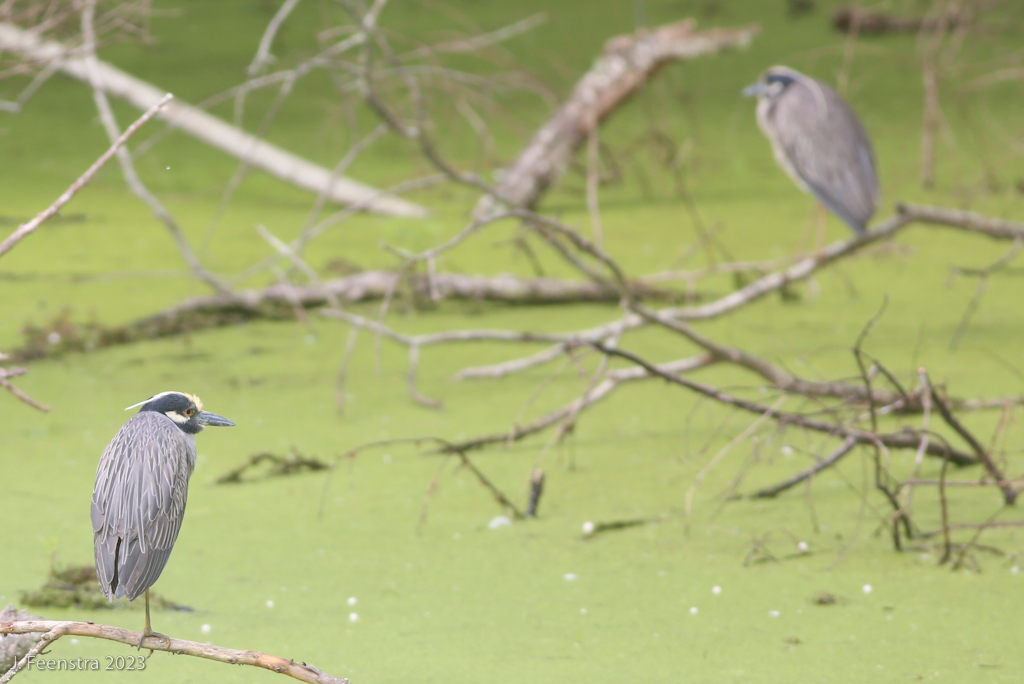



Leaving the famous Texas coast birding hotspots behind, we crossed the border into Louisiana and birded a coastal woodland there. In the cool morning we found Blue-winged Warbler in the woods and a couple of Piping Plovers out on the beach. Also in the woods were Indigo and Painted Buntings, a handful of Orchard Orioles, lots of Hooded Warblers, and our first Yellow-billed Cuckoo. After a picnic lunch in Sabine Pass we continued to Sabine Woods and rejoined the regular Texas birding crowds. With good reason, though, the Texas woods are great. We saw a few Prothonotary Warblers, Louisiana and Northern Waterthrushes together, point-blank Acadian Flycatchers, another Cerulean Warbler, more Hooded Warblers, and good times until we were all birded out. A short stop on the highway proved fruitful with a roadside Couch’s Kingbird on our way back to the base in Winnie.




When the south wind blows, migrants take that tail wind north, and the coastal woodlands get empty. Other than a small group of Tennessee Warblers and a Prothonotary Warbler, there wasn’t much else for us on High Island… except that we were at the Smith Oaks preserve and had all of the nesting herons, cormorants, and spoonbills to watch. We also saw a family of tiny, black fuzzball Common Gallinule chicks walking around. Given the conditions we went to the coast on the Bolivar Peninsula to catch up with the coastal species we had been missing because the warblering had been too good. Rollover Pass was busy with Sandwich and Black Terns among the many others. While watching all of that, a Clapper Rail snuck out of the grass and made a long, exposed scurry across the sand to the next patch of cover. We also visited Bolivar Flats where hundreds, perhaps a thousand, American Avocets waded in formation creating a wave of feeding shorebird madness. The brushy area on the flats had some Sedge Wrens and a White-tailed Kite. A stop in the saltmarsh produced some excellent looks at Seaside Sparrows, including one right out of the van window while we were about to turn around. The end of the day was at Anahuac National Wildlife Refuge along the loop road through the marsh. Hundreds of Fulvous Whistling-Ducks, lots of shorebirds, including side by side comparisons of Least, Semipalmated, and Western, a Glossy Ibis, and two diminutive Least Bitterns made it a great way to end the day and showed that the Texas coast isn’t always all about warblers.


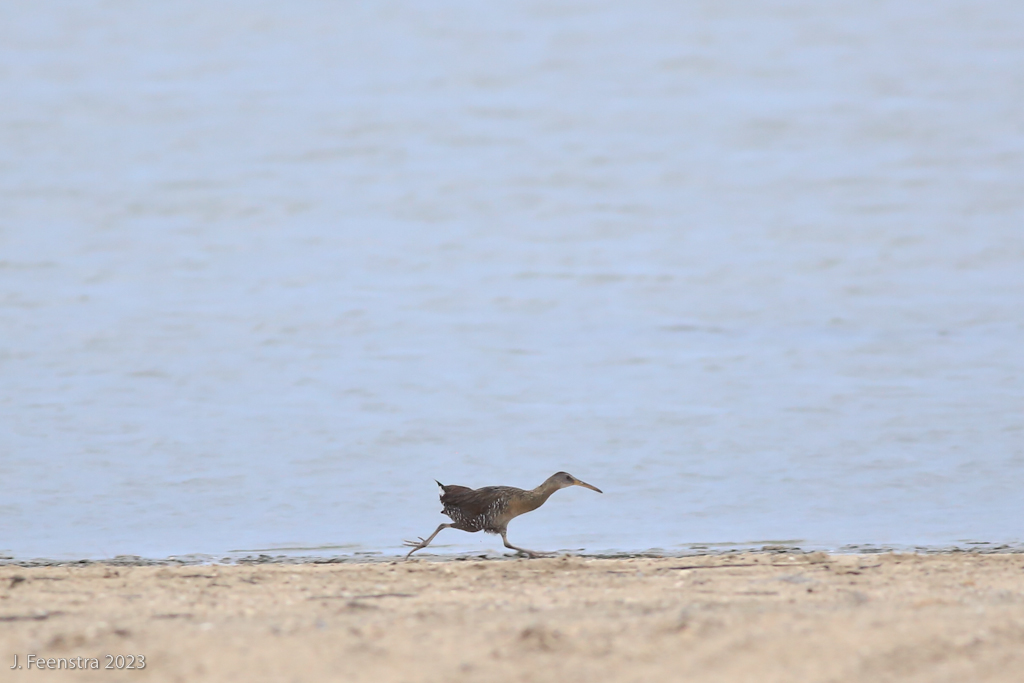
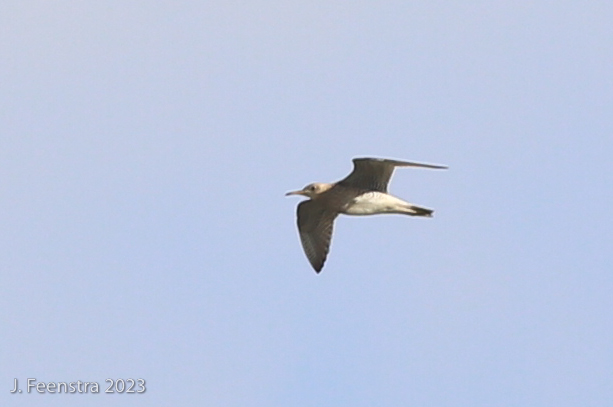

With continued winds from the south the coastal forests were pretty empty for the rest of our trip. We tried High Island right at dawn, and knew for sure that warblers were not going to be our thing today. So we worked on waterbirds and less flighty stuff. We watched a swarm of Cliff Swallows under the Intracoastal Waterway bridge, coming and going from their mud pot nests. We found another nest back at Anahuac, a Brown Thrasher incubating. The shorebirds there were decent with Wilson’s Phalaropes following Blue-winged Teal the way Cattle Egrets follow cows. But it was our last day out, and it became time to begin our trip back to Houston. We stopped at a few little places along the way including a sod farm for Buff-breasted Sandpiper, and a random roadside in emergency when a Swallow-tailed Kite flew over. Our last stop in Liberty, Texas was a glorified bathroom break, but we had scope looks at our tour’s final birds: a singing Carolina Wren and a male Painted Bunting, a nice end to a great week of birding one of the US’s great birding sites.


